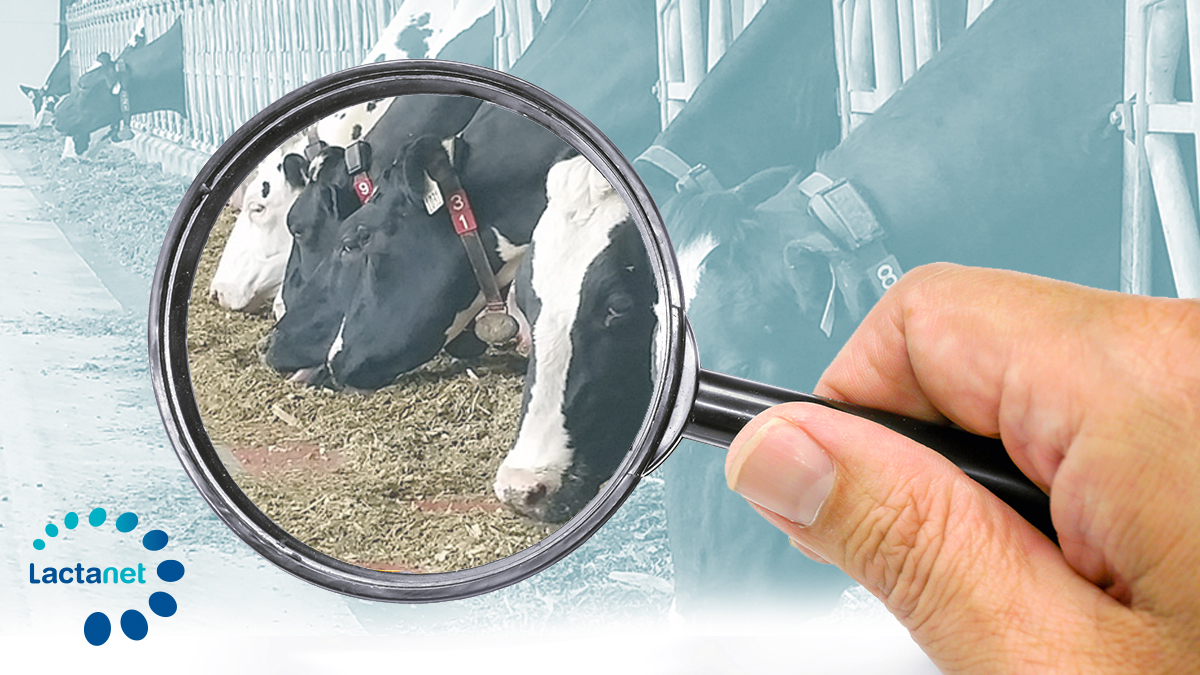A new dynamic dashboard for informed decision making
- April 21, 2021
- Le Producteur de Lait Québécois Magazine
Herd management involves making decisions in the heat of the moment, every day. Although managers often rely on their intuition, the best decisions are the ones based on data. Lactanet’s new dynamic dashboard is designed for easy access and interpretation of this herd management data.
We’ve been using dashboards daily for a long time now. Whether we’re in a car, a tractor or any other vehicle, we routinely glance at the gauges and indicators to make sure everything is working properly. Is there enough gas? Are we over the speed limit? Not paying attention to your dashboard or a faulty gauge could mean running out of gas or getting a speeding ticket!
Over time, dashboards have also made their way into management software. Indicators and graphs are used to present the most significant business results or a summary of management data compared to benchmarks, which are updated on a regular basis. This way of accessing information makes it easier for managers to assess the situation, make decisions and ultimately reach their objectives.
Features of the new Dashboard
Lactanet’s new Herd Summary dashboard is designed to make it easier to view milk recording data and to promote decision-making based on that information. Below are some of the benefits of this new tool:
- A quick and easy way to review the main herd management indicators at a glance without having to open and check multiple documents;
- Management indicators are presented with interactive features and colour-coding to facilitate monitoring;
- Historical herd data is presented graphically for a specific period, with benchmarks for certain criteria (breed, province, etc.);
- A direct connection to the national database for a rapid update after each milk recording test;
- Herd management data is grouped under topic tabs that can be rearranged in a single click.


We sometimes forget that the fundamental principle of milk recording is to provide quality data for managing dairy herds: individual and herd level metrics, data history and benchmarks used for comparative purposes. All this information contributes to informed decision-making in all areas of herd management. Nevertheless, it is not always easy to draw conclusions from the data found in different management reports, applications and farm management software. Therein lies the advantage of Lactanet’s new dynamic dashboard. You get an overview of how the key herd management indicators are evolving, at a glance with just a few clicks.
Ever-evolving Management Solutions
This new dashboard adds to Lactanet’s long line of management solutions based on quality data. Today, more than ever before, dairy managers are able to make quick assessments and make informed decisions. This first version of the Herd Summary dashboard will certainly evolve in response to the needs and feedback of the users, and other similar tools are already in the works. Regardless of whether you prefer paper reports or are eager to embrace new technologies, the key is to rely on data to guide your decisions!
WHY MAKE DATA-BASED MANAGEMENT DECISIONS?
In our daily lives, we would all like to believe in our ability to make intuitive decisions. While intuition can indeed produce a spark, it’s the data that enables us to identify challenges and opportunities, quantify gains and losses, and understand current and emerging issues. According to a survey of senior executives, operations with a strong focus on data analysis are three times more likely to report significant improvements in decision making compared to those that are less reliant on data. Below are three of the main benefits of data-driven decision making:
MAKE MORE CONFIDENT DECISIONS
Once you begin collecting and analyzing data, you’ll find it easier to arrive at a confident decision about virtually any challenge. Data is logical and concrete in a way that intuition simply is not. By removing the subjective elements from your decisions, you can instill confidence in yourself and your operation.
BECOME MORE PROACTIVE
With practice and reliable data, it’s possible to use your data more proactively – for example, by identifying opportunities for gains or detecting threats before they become too serious.
SAVING MONEY BY CUTTING BACK ON COSTS
According to a recent survey of Fortune 1000 executives, one of the most impactful initiatives is using data to decrease expenses. Using up-to-date information to make informed and economical decisions is rapidly becoming the norm for skilled managers.
Source: Tim Stobierski, Harvard Business School Online, August 2019











